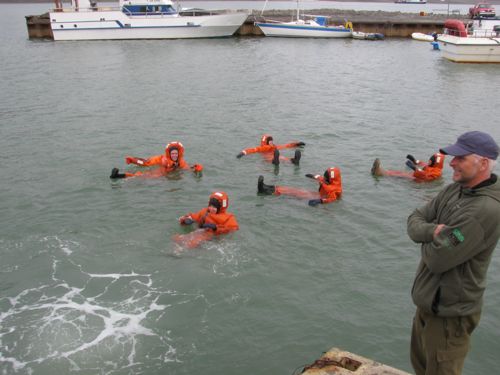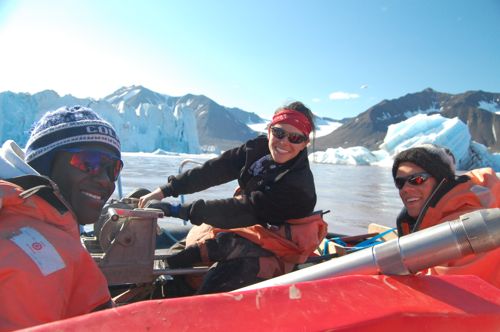Today's journal is written by REU student George Roth, who is a student at the University of Washington in Seattle, where he is majoring in oceanography

I’ve often been asked why a kid who grew up on a potato farm in Idaho became interested in the Arctic. During the summer after my freshman year, I went on a month-long University of Washington course/experience where we traveled along the west coast of Greenland with two geology teachers learning about climate change, glaciers, and the Greenland Ice Sheet. I loved the experience, and it certainly helped give me a career direction. Since then, I’ve been studying oceanography and geology at UW. My goal is to try to get up to the Arctic as much as possible, and thanks to programs like this REU, I can make that a reality.

The Arctic exists at the very edge of human habitation. Except for a few dozen thousand indigenous peoples such as the Inuit, and research communities like Ny-Alesund, it’s complete wilderness. I’ve always been curious about the blank, unlabeled spots on maps. If you were to look at a simple world map or a globe, you’d get the impression that beyond, say, Anchorage or Reykjavik, there’s absolutely nothing up there. Maybe it’s a frozen, iced-over wasteland 365 days a year, with a few dozen igloos, a few hundred polar bears, and absolutely nothing else.

The reality is completely different – the Arctic is amazingly diverse in landscapes, cultures, and even wildlife (you have to look hard!). The fact that anybody lives up here, in modern communities, doing modern jobs, is inconceivable to most people on earth. Come to think of it, that’s a good motto: “Live life inconceivably.”

We humans who choose to live and work here have a unique set of traits too. Of course, the first is a willingness to be in a place that’s cold even in the summer, which frankly doesn’t sound that crazy if you’ve been through a heat wave or two.

The next is a strong feeling of determination and community. We all know that, if there’s work to be done, it’s in everyone’s interest to finish it, even if it’s uncomfortable and messy. And if you’re living up here, you’ve already self-selected as a person willing to have fun and get things done with a tiny population.

Finally, the most crucial traits of any Arctic resident are patience and a good sense of humor. If you’ve read Mark’s blog so far, you’ve seen that things often go wrong. But I’d say we’ve been relatively lucky so far – problems with weather, wildlife, and logistics can throw a wrench in everyone’s plans, but panicking and complaining aren’t going to make it better.

The whole “sense of humor” also applies to the variety of surreal situations you can find yourself in here… the sun high in the sky at 2am, caribou munching on the grass in someone’s front yard, the entire town beating on drums and blasting on rusty, dented trombones to say farewell to the ship of the Governor of Svalbard… and that’s just an example of what can happen on the weekdays! I can’t count the number of times I’ve paused in the middle of a peculiarly “Arctic” situation and chuckled at myself.

The wilderness and isolation in the Arctic make it a great place to do any kind of scientific research. Chances are that any thing, place, or phenomenon you study up here is something previously unexplored and unexplained. As Ross once explained to me, “One of the great things about polar research is that you can see things that have never been seen before.”

Our work aims to better understand a particular set of glaciers: what they’re doing, how much they’re doing it, and how they might change in the future. Even though most people don’t realize it, these changes have an enormous effect on the weather and water cycle worldwide. It’s in everyone’s interest for there to be a greater understanding of these changes, and I feel honored to be part of a team that’s working on just that. Plus, personally speaking, it’s a pretty sweet gig all around!

At this point, I’m not sure I’ve entirely answered why I’m into the Arctic so much. To be completely honest, it’s probably for the same mysterious reason why some people love playing the piano, stamp collecting, or chemistry (ugh). But I figure that, if I can be in a place I enjoy, do work that contributes to our understanding of the world, and maybe have a little fun on the side, well, isn’t that what we all hope for?


Comments